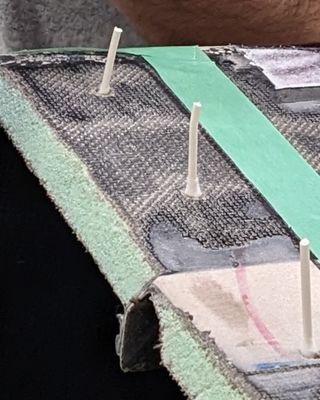!["Application of Scott Bader gelcoats on a smooth composite surface, showcasing the finishing process for marine materials" [G]](https://a.storyblok.com/f/329344/8333x2083/d5276172ea/crestabond-application-header.jpg/m/2200x500)
- Home
- Knowledge Hub
- Structural Adhesives
- How does a structural adhesive work?
How does a structural adhesive work?
A structural adhesive not only bonds substrates to one another, but a structure made from two or more parts bonded together gains structural strength from an adhesive.
Applied in liquid form, it wets the substrate and is partially absorbed by it. It then changes to a solid, this bonds the substrates together and the process is called curing.
The bond resists breakage when external forces are exerted on it and the strength of the bond, the structural adhesive, as well as the strength of the substrate, determine the overall strength of the structure.
The curing system of the structural adhesive depends on the substrates, application and chemistry amongst others. Structural adhesives can be chemically cured, heat cured, moisture cured, pressure sensitive or UV cured.
Related
Your guide to MMA structural adhesives
Scott Bader’s range of Crestabond MMA primerless structural adhesives are specifically designed to bond various substrates with minimal preparation needed and no requirement for primer, dramatically...
!["Workers installing solar panels on metal framework using Scott Bader structural adhesives for secure mounting" [G]](https://a.storyblok.com/f/329344/4032x2268/9d09d8033d/solar-installation-with-crestabond-structural-adhesives.jpg/m/320x400)
The advantages of structural adhesives
Structural adhesives negate the need to use mechanical fixings such as screws or bolts. These joining methods often require an additional production step of drilling a hole that creates a weakness in...

Applying structural adhesives
Although some adhesives are single component and can cure by other mechanisms such as heat or UV, Scott Bader’s Crestabond and Crestomer structural adhesives are two-component and cure by a process...
!["Construction workers installing solar panels on a flat roof, using Scott Bader structural adhesives for secure mounting" [G]](https://a.storyblok.com/f/329344/4032x2268/c647cb7022/solar-installation-with-crestabond-2.jpg/m/320x400)
How structural adhesives are revolutionising solar PV installation
We recently caught up with Scott Bader’s solar PV expert, Andrew Harvey, on the improvements structural adhesives bring to solar installation, and how they should be used for optimum installation.
